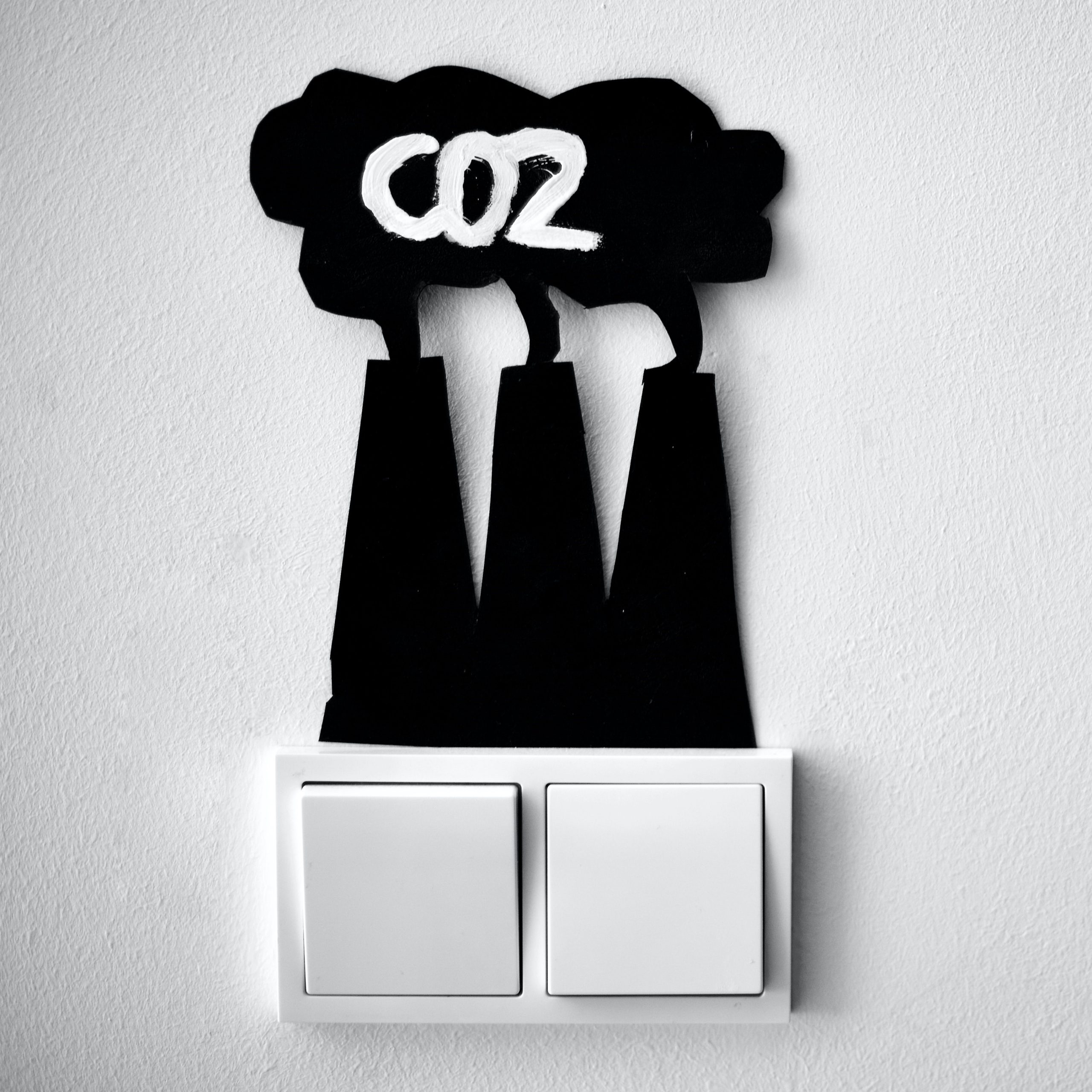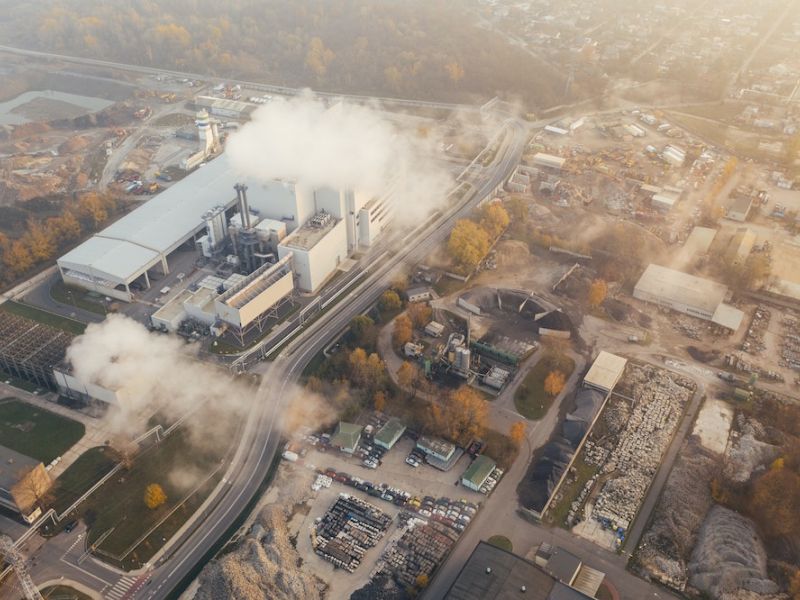
Everything you need to know about Carbon Offsetting for Businesses in the UK
Many businesses use terms like carbon neutral and carbon offsetting. These terms refer to carbon reducing schemes that businesses can invest in to balance out their carbon emissions. Carbon offsetting is increasing in popularity as more businesses consider their environmental impact.
In the UK businesses can offset their carbon emissions by investing in low-carbon projects both at home and abroad. Within this article we provide everything you need to know as a business owner for carbon offsetting.
- What is Carbon Offsetting?
- Why are businesses looking to offset carbon?
- How to offset your carbon footprint?
- Accredited Carbon Offsetting Schemes
- What’s the advantage of accredited vs non-verified carbon schemes?
- How Much Does It Cost To Offset Carbon?
- Does Carbon Offsetting Work?
- Disadvantages to Carbon Offsetting
- Alternatives to Carbon Offsetting
- Can you trade your carbon credits?
- Are carbon offsets tax deductible?
- What does the future look like for Carbon Offsetting?
What is Carbon Offsetting?
Carbon offsetting is a method to compensate for the carbon emissions a business emits by investing in projects that reduce greenhouse gas (GHG) emissions.
Carbon offsetting can be achieved in three ways:
- Purchasing carbon emissions reductions (known as carbon credits) from other businesses that have funded environmental projects.
- If a business self-funds and coordinates their own carbon offsetting projects.
- Investing in existing carbon offsetting schemes. These schemes do not need to be local to the organisation investing in them. The schemes are usually overseas in regions where the investment in an environmental project will have the most impact.
There are two main methods of carbon offsetting schemes:
Carbon Capture Schemes
This is where carbon is absorbed from the atmosphere usually by natural methods. Common methods include reforestation (tree planting) and methane capture to reduce GHG emissions.
Carbon reduction schemes
This method looks to reduce the amount of carbon emitted by investing in energy efficiency schemes or renewable energy projects. Common schemes include solar and wind turbine farms.
Why are businesses looking to offset carbon?
There are many reasons why a business will invest in carbon offsetting:
Net Zero and Carbon Neutral Goals
Businesses will offset their carbon emissions are part of their carbon neutrality goals. These goals are usually influenced by the UK’s government’s Climate Change Act 2008 legalisation to reach net zero by 2050. Therefore, businesses are under pressure to reduce their carbon emissions and GHG emissions. To be considered carbon neutral a business’s carbon offsets are equal to or greater than the carbon they emit.
It can be extremely challenging for some organisations to meet these goals. Businesses will always emit a certain level of carbon that they cannot avoid and may be unable to switch to a renewable energy source, use less energy, or reduce emissions. For example, industrial/heavy manufacturing businesses whose only option for achieving net zero/carbon neutrality is to carbon offset.
Increased awareness of climate change/protecting the environment and biodiversity
There are more than just regulatory reasons to offset carbon. We live in a world where most agree on the significance of global warming, sustainability or protecting biodiversity. This has changed the way some businesses operate. For example, in 2022 ITV selected eBay as the love Island sponsor as they recognised eBay is more sustainable and environmentally friendly than the fast fashion brands they would usually select.
Another environmentally driven business example can be seen with Patagonia who are transparent about their efforts to find sustainable methods of production. They also contribute 1% of all their profits to environmental non-profit organisations with their own ‘earth tax’.
Employee engagement
An organisation’s employees will most likely want their employer to be climate conscious. A 2016 study provided evidence that there is a positive correlation between Corporate Social Responsibility (CSR) strategies and employee engagement. Therefore, a CSR strategy will result in a more engaged workforce which can improve the performance of the business. This will also help retain employees and recruit potential candidates for the business. CSR benefits three parties of the business owners, employees, and the environment or local communities.
Positive branding and consumer behaviour
One of the most important stakeholders to a business are its consumers. A study discovered that 72% of consumers consider sustainability in their purchasing decisions. Therefore, some businesses are seeing an increase in sales if their brand demonstrates an understanding of the climate crisis.
Investor funding or pressure
Similar to consumers, potential investors may prefer to fund sustainable brands if the investor is climate conscious. Alternatively, a large investment firm may want to improve it’s own brand’s image and could achieve this by investing in more sustainable businesses.
Physical factors
A business involved in an affected industry by climate change such as agriculture or tourism may want to invest in carbon offset projects. Carbon offset schemes can be local or worldwide and businesses may invest in schemes in an attempt to improve any negative impact on the environment that has affected their own production or supply chain.
How to offset your carbon footprint
Before businesses can consider offsetting their carbon they must do the following:
a) Measure and calculate their current carbon footprint
There are two popular ways to measure your carbon footprint:
1) Use an online calculator
This method is cost effective and quick, however it may not be that accurate and takes into account a lot of assumptions that can be more error prone.
2) Hire an energy consultant
You will receive a sophisticated and detailed report and reduces the chance of any miscalculations but at an additional cost.
b) Reduce their own carbon / GHG emissions
Once you have measured your carbon footprint you can then calculate if reducing your consumption makes commercial sense. For example, it may be easy to implement carbon consumption reducing strategies but they could be extremely costly. Or it’s simply impossible for your business to reduce your emissions any further. Once you have made this evaluation you are then ready to make a decision on either reducing your emissions or offset your carbon.
c) Calculate the remaining carbon consumption and buy carbon offset options to balance the difference
To achieve net zero / carbon neutrality you have to remove the equivalent amount of emissions to the number of emissions you emit. You calculate the remaining balance of emissions which generates the amount of carbon offsets you require. You can then start evaluating the different carbon offset schemes and select a scheme that is best aligned to your business.
It’s worth noting that not all schemes are created equal and one scheme may be more cost effective than another. There are differences in the price to participate in a scheme and the amount of GHG emission relief that you receive.
Accredited Carbon Offsetting Schemes
As of 2021, the Woodland Carbon Code and the Peatland Code are the only two offsets schemes accredited by the UK Environmental Agency. More offset schemes may be added in the future and guidance from the agency can be used to identify the best carbon credits. However, there are international schemes available that have been verified by Verra, Plan Vivo, or Gold Standard. Also it’s worth remembering, if a company reaches net zero emissions, they may choose to have this independently verified. There are many additional carbon offsetting schemes available and we’ve compiled some of our favourites here.
What’s the advantage of accredited vs non-verified carbon schemes?
Accredited carbon offsetting schemes have several advantages over non-verified schemes such as:
Increased credibility
Accredited carbon offsetting schemes have been independently verified, ensuring that they meet high standards of quality and transparency.
Verifiable results
Accredited schemes can demonstrate the effectiveness of their projects, making it easier for companies to track and verify their emissions reductions.
Consistency
Accreditation ensures that offset projects adhere to a consistent set of standards and protocols. This makes it easier for companies to compare and choose the most effective offset projects.
Quality assurance
Accreditation provides a level of quality assurance, ensuring that the carbon offsets purchased are legitimate and will deliver real emissions reductions.
In contrast, non-verified carbon offsetting schemes may not have the same level of credibility, transparency, and quality assurance. Companies that purchase carbon offsets from non-verified schemes may not be able to fully verify the effectiveness of their offset projects or guarantee that their offset purchases are legitimate.
How Much Does It Cost To Offset Carbon?
There is a cost of offsetting carbon emissions which can concern business owners and financial decision makers. The cost of offsetting currently ranges from $3-5 per ton of carbon dioxide equivalent (tCO2e), but a study by University College London suggests that by 2030, this cost could increase to $20-50/tCO2e and by 2050, it could be above $50/tCO2e, in order to properly incentivize and compensate those involved in carbon neutralizing projects.

Does Carbon Offsetting Work?
The evidence supporting the ability of carbon offsetting for business to reduce greenhouse gas emissions is clear. Experts agree that it plays a crucial role in addressing climate change. While carbon offsetting may not be a complete solution, it does make a positive impact. Additionally, regardless of how well a company may implement emissions reduction strategies, most will still have a remaining carbon footprint that requires offsetting.
Disadvantages of Carbon Offsetting
Carbon offsetting does have some critics who consider the practice unethical. They believe it is an easy way for businesses to externally demonstrate they are involved in environmental issues but are only involved for commercial reasons. The critics argue that if they really cared then they would review their internal emissions and improve their sustainability, instead of purchasing offsets which critics consider an easy way out. Some believe this can lead the way to greenwashing. However, as discussed some businesses cannot meet net zero without offsetting carbon because of the nature of their operations.
We’ve summarised some of the common criticisms of carbon offsetting below:
- You don’t reduce your own carbon footprint
You are investing in another organisation to cur their own emissions instead of reducing your own carbon footprint so your business doesn’t have to cut your own emissions. - Carbon offsetting only reduces CO2if the projects are additional and permanent
Carbon offset projects must be ‘additional and permanent’ meaning they are adding additional carbon reducing strategies and that they don’t have a limited shelf life and are permanent and will last forever. For example, imagine how effective a tree planting scheme would be if those trees later were deforested. - Developing nations are paid to offset carbon while the developed nations continue to emit
The most developed countries of the world emit the majority of the world’s carbon. Carbon offsets could be seen as just licenses for developed countries to continue to pollute with the benefit of aiding those in developing countries. - Different schemes have different effectiveness rates
There are varying levels of effectiveness of carbon offset schemes which make it difficult to choose one that actually reduces emissions. - CO2 offsets are only recognised at the end of project durations
Carbon offset programmes need to be carried out until their end. As mentioned, we can’t measure the schemes benefits if it isn’t permanent. Again if we look at trees planting, it is only effective if those trees are protected during their entire life span for the carbon benefits to be recognised. - There are not enough offsets for all CO2emissions
Not surprisingly, we emit far more CO2 than we can offset, therefore we cannot rely on offsets alone and should instead focus on cutting emissions. - Carbon offsetting projects could lead to greenwashing
Greenwashing can take various forms, including investing in non-verified carbon credits, neglecting in-house emissions reductions, and engaging in double-counting carbon credits. Additionally, some companies may promote a particular program solely for the sake of public attention without actually making a significant impact on reducing emissions.
Alternatives to Carbon Offsetting
You may decide that carbon offsetting will not work for your business and therefore it is important to know the alternative options available to you:
Reduce your own emissions
Once you’ve measured your carbon footprint you can focus on your own carbon reduction so you do not have to part take in a carbon offsetting.
Empower employees to improve their own sustainability
Cycle to work schemes, car-pooling and many other initiatives are simple steps to being more environmentally friendly. By empowering your own employees and providing guidelines on how to reduce their own personal carbon footprints you can engage your staff in a climate conscious way. This may provide similar benefits to the employee engagement benefits of offsetting.
Certified B Corporation
This certification could provide your business with the same CSR benefits to customers, investors and employees without having to carbon offset. Also known as a B Corp, Certified B Corporations are companies verified by B Lab that meet social, environmental performance, transparency and accountability standards.
Review your own suppliers
Perform a review of your suppliers across the business and considering switching to suppliers who are using renewable energy instead of those that may be using excess fossil fuels. You could potentially give your employees the choice to select their own providers such as a choice of pension schemes and ranks them on their green credentials.
Support Environmental Charities
As part of your CSR strategy you could support charities that are environmentally focused and have the greatest impact on reducing emissions. For example, there are likely to be charities that support wildlife conversation and protecting biodiversity with planting trees.
Can you trade your carbon credits?
Yes, carbon credits can be traded. Companies that emit more emission than their targets are issued carbon credits. These credits can be sold to other companies. This allows businesses who are looking to offset their carbon to purchase credits from other companies that have already reduced their emissions. This creates a market as companies that emit more can purchase credits to offset their excess emissions and meet their targets, and companies that can maximise the reduction of their own emissions are given financial incentives to do so as they can profit from selling their earned carbon credits.
Carbon credits are bought and sold on carbon markets such as the European Union Emissions Trading System (EU ETS) and the Chicago Climate Exchange (CCX). The process of trading these carbon credits is governed by international agreements, such as the Kyoto Protocol, and national and regional cap-and-trade systems.
Are carbon offsets tax deductible?
Yes and No. The tax deductibility of carbon offsets depends on the purpose of the purchase. If the purchase is solely for the business purposes, such as attracting customers through eco-friendly branding, then it may be tax deductible. However, if the purchase has a dual purpose, such as personal interest in climate change, it may not be tax deductible unless it can be shown that it was made exclusively for business purposes.
What does the future look like for Carbon Offsetting?
The future of the carbon offset will be largely influenced by government regulation. Currently most offsets purchased are due to businesses aiming to meet legalisation set by governments. Any changes to compliance rules will have a significant impact on demand. More ambitious climate goals will increase demand for offsets. Likewise, any pushback in timelines will decrease demand.
With innovations in technology and an increase in demand it’s likely that the supply of offsets schemes will increase. A larger market of high-quality low-cost offsets may result in the short term. However, once countries reach net zero emissions, offset supply will decline and we may need to shift towards carbon removing offsets or move away from offsets altogether.
Carbon offsetting may be impacted by a shift towards projects that remove emissions, rather than prevent them. This change could be facilitated by the development of cost-effective carbon sequestration technology. Microsoft has already announced a $1 billion investment in this technology to help achieve its carbon negativity goal. The incorporation of co-benefits in offset projects could also increase demand. There is a growing interest in projects in developing countries, but these projects will need better methodologies for validation and sustainability. Pilot projects could provide valuable insights into new technologies and methodologies, but strict certification standards may need to be waived for these projects.
How Can PES Help Offset Your Carbon Footprint?
We provide carbon management services to assist our clients in reducing their carbon footprint. Our team of experts can offer guidance on energy efficiency, clean energy solutions, carbon emissions monitoring, and carbon credits. If you would like more information on carbon offsetting then speak to one of our energy consultants who can support your business with your net zero goals.




